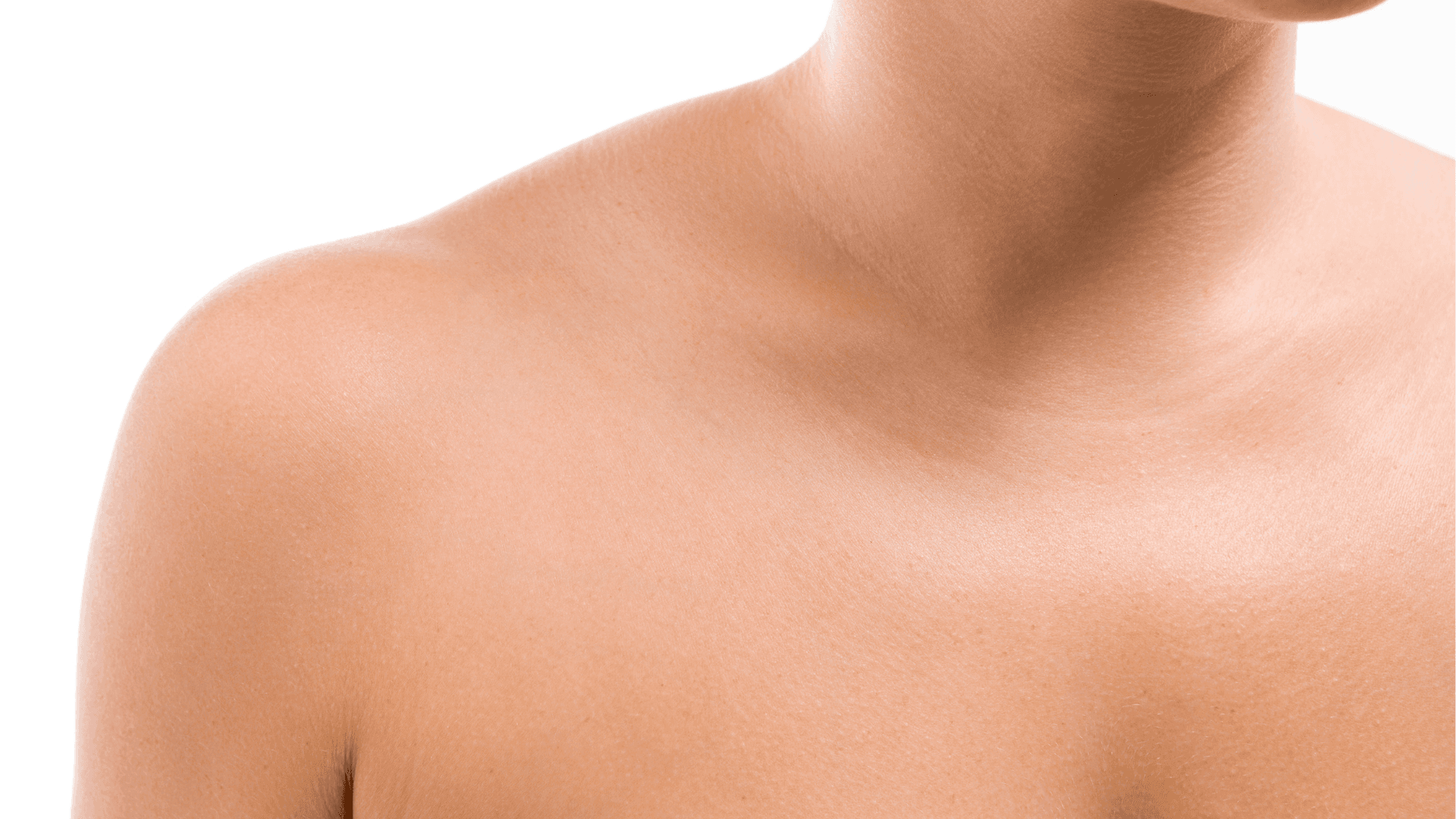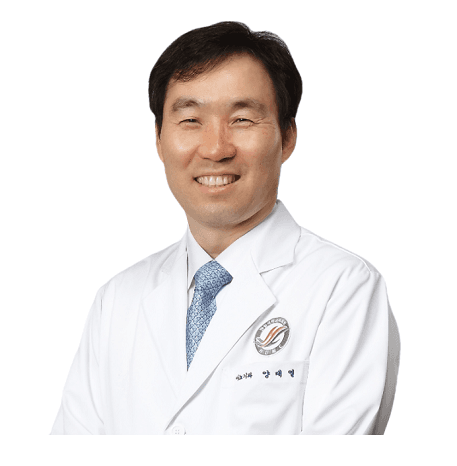Medical Tourism Blog
Phalloplasty in Korea | Best Clinics, Costs, Procedure Types & More

Table of contents
- Phalloplasty Overview
- Best Phalloplasty Clinics in Korea
- Benefits of Phalloplasty in Korea
- Cost of Phalloplasty in Korea
- Alternatives to Phalloplasty
- Conclusion
Are you considering gender-affirming surgery and looking for the best place to undergo such a transformative procedure? Look no further than Korea, where phalloplasty has become a beacon of hope for many, thanks to the country's renowned medical innovations and skilled surgeons.
Phalloplasty Overview
Phalloplasty is a complex surgical procedure designed to construct or reconstruct a phallus. Primarily sought by transgender men as part of gender confirmation surgery, it is also utilized for cisgender men who have experienced penile trauma, congenital defects, or cancer-related surgical removal. The objective of phalloplasty is to create a functional and aesthetically appealing phallus that aligns with the patient's gender identity and personal goals.
The procedure typically involves harvesting tissue from a donor site on the patient's body, most commonly the forearm (radial forearm flap), thigh (anterolateral thigh flap), or abdomen, to sculpt a new phallus. Each donor site presents unique advantages and potential complications, and the choice depends on the patient's body type, available tissue, and specific surgical goals.
Phalloplasty may involve several stages and additional procedures to achieve desired outcomes. Initial surgery usually focuses on creating the phallus itself, alongside urethral lengthening to enable standing urination. However, urethral complications, like strictures or fistulas, are common and may require additional surgeries for correction.
Subsequent procedures might include the insertion of erectile prosthetics to facilitate sexual function and the construction of a glans penis for enhanced aesthetic appearance. Moreover, patients might elect for scrotoplasty to create a scrotum, which can eventually host testicular implants.
Phalloplasty is a highly personalized procedure, tailored to meet the anatomical and personal desires of each patient. It requires a multidisciplinary approach involving plastic surgeons, urologists, and mental health professionals to ensure comprehensive care. Recovery from phalloplasty can be extensive, taking several months, during which patients undergo physical rehabilitation and adaptation to their new genitalia.
While phalloplasty offers transformative benefits, it is not free from risks. Patients are counseled about potential complications, including infection, donor site morbidity, and issues related to the appearance or function of the new phallus. Thorough preoperative evaluation and postoperative care are crucial to minimizing these risks and achieving the best possible outcomes.
Best Phalloplasty Clinics in Korea
Listed below are the best clinics in Korea:
| Clinic Name | Key Features | Special Techniques |
|---|---|---|
| Kangdong Sacred Heart Hospital | Comprehensive medical services, cutting-edge facility, focus on surgical procedures across multiple specialties | Advanced neurological and cardiology procedures, orthopedic surgeries, oncological surgical interventions |
| Kangdong Sacred Heart Hospital LGBTQ Plus Center | LGBTQ+ specific healthcare, diversity-focused care, gender-affirming procedures | Phalloplasty, gender confirmation surgery, hormone therapy, mental health psychiatry, voice feminization surgery |
| PS Beauty Clinic | Advanced aesthetic treatments, non-invasive procedures, personalized care | Microdermabrasion, chemical peels, Botox and dermal fillers, laser treatments, body contouring, cellulite reduction |
Kangdong Sacred Heart Hospital
Kangdong Sacred Heart Hospital in Cheonho stands as a beacon of advanced medical care in Korea, offering an array of specialized procedures conducted by highly skilled professionals within a cutting-edge facility. The hospital's comprehensive services are designed to address a wide range of medical needs, ensuring that patients receive the highest standards of care across various specialties. In the realm of general surgery, procedures such as appendectomies and cholecystectomies are performed to alleviate conditions like appendicitis and gallstone-related complications. Orthopedic surgeries, including knee and hip replacements, provide relief and improved mobility for patients with joint diseases, enhancing their quality of life.
In addition to surgical interventions, Kangdong Sacred Heart Hospital excels in neurological and cardiology services, offering sophisticated procedures like craniotomy, spinal fusion, coronary artery bypass grafting, and angioplasty to treat complex conditions effectively. The hospital also offers vital oncology procedures such as mastectomies and lobectomies to combat cancer, alongside urological and gastroenterological services including prostatectomies and colonoscopies. This wide range of specialties underscores the hospital's commitment to delivering comprehensive and integrated care, backed by state-of-the-art technology and a community of experts dedicated to improving patient outcomes.
Find more about this clinic here: Kangdong Sacred Heart Hospital Website
Kangdong Sacred Heart Hospital LGBTQ Plus Center
Kangdong Sacred Heart Hospital LGBTQ Plus Center in Cheonho is a pioneering healthcare institution dedicated to providing a comprehensive range of medical procedures and therapies specifically tailored to meet the unique needs of the LGBTQ+ community. The center emphasizes respect and diversity, aiming to foster a healthier society through inclusive and compassionate care. Recognized for its state-of-the-art facilities and expert medical professionals, this center offers a supportive and understanding environment for those undergoing gender-affirming procedures, such as phalloplasty in Korea.
- Mental Health Psychiatry: Specializes in providing mental health support tailored to LGBTQ+ individuals, ensuring a safe and understanding environment for psychological well-being.
- Hormone Therapy: Offers gender-affirming hormone therapy with careful monitoring and support, along with fertility preservation options before treatment.
- Plastic Surgery: Performs top surgery and breast augmentation, enhancing body congruency and aiding in physical transition.
- Gonadectomy (Gonadal Surgery): Provides vital surgeries like hysterectomy and orchiectomy as part of gender transition.
- Otolaryngology (ENT services): Features voice feminization surgery and voice training to help align individuals’ voices with their gender identity.
- Gender Confirmation Surgery: Expertly conducts surgeries such as phalloplasty for trans men, ensuring body congruence and identity alignment.
- Infectious Diseases: Comprehensive care in HIV treatment and STI prevention, focusing on reducing transmission and promoting sexual health.
These offerings make Kangdong Sacred Heart Hospital LGBTQ Plus Center the ideal choice for phalloplasty and other gender-affirming procedures in Korea, embodying a holistic approach to patient-centered care.
Find more about this clinic here: Kangdong Sacred Heart Hospital LGBTQ Plus Center Website
PS Beauty Clinic
PS Beauty Clinic, located in Gyodae, Korea, is a comprehensive cosmetic center renowned for its diverse range of advanced beauty treatments aimed at enhancing both natural aesthetics and personal confidence. The clinic offers a suite of facial treatments, including microdermabrasion and chemical peels, which rejuvenate the skin by removing its uneven outer layers and promoting regeneration for a smoother, youthful complexion. For those seeking non-invasive enhancements, injectables such as Botox and dermal fillers effectively reduce the appearance of fine lines and wrinkles, while also adding volume to facial contours.
Moreover, the clinic excels in laser treatments and body contouring services, addressing various cosmetic concerns with precision and care. Laser hair removal and laser skin resurfacing are popular choices for those looking to achieve smooth, blemish-free skin. Meanwhile, body treatments like body contouring and cellulite reduction are designed to reshape and improve body aesthetics without surgery. At PS Beauty Clinic, each procedure is tailored to the individual’s specific cosmetic goals, with an experienced team providing personalized recommendations to ensure optimal results.
Find more about this clinic here: PS Beauty Clinic Website
Benefits of Phalloplasty in Korea
Phalloplasty, a complex surgical procedure designed to construct or reconstruct a phallus, is an option for those seeking gender-affirming surgery or for reconstructive purposes following accidents or medical conditions. In recent years, South Korea has emerged as a leader in this field, renowned for its cutting-edge medical technology and highly skilled surgeons. Below are some key benefits of undergoing phalloplasty in Korea:
Advanced Medical Technology
South Korea is known for its rapid adoption and development of advanced medical technologies, making it a prime destination for complex surgeries like phalloplasty. Korean medical facilities are equipped with state-of-the-art technology, ensuring high precision and safety during surgery. This technological edge facilitates better outcomes and a smoother recovery process for patients.
Highly Skilled Surgeons
Korean surgeons are recognized globally for their expertise, particularly in the field of plastic and reconstructive surgery. Many surgeons in Korea have undergone extensive training and are experienced in performing intricate procedures such as phalloplasty. Their skill set and dedication to providing top-notch patient care contribute significantly to successful surgical outcomes.
Comprehensive Post-Operative Care
The healthcare system in South Korea places a strong emphasis on comprehensive post-operative care, which is critical for recovery after phalloplasty. Clinics and hospitals offer robust follow-up programs that include routine check-ups, rehabilitation support, and access to mental health professionals. This holistic approach to recovery helps ensure that patients not only heal physically but also receive support for their mental well-being.
Cost-Effective Options
While phalloplasty is a sophisticated and costly procedure internationally, South Korea offers relatively more affordable options without compromising quality. The cost of surgery in Korea is often lower compared to Western countries, making it an attractive option for many international patients looking for high-quality and cost-effective care.
Cultural Sensitivity and Inclusivity
Korean medical institutions are increasingly aware of and sensitive to the needs of the LGBTQ+ community. Clinics that specialize in gender-affirming surgeries often employ staff trained in cultural competency, ensuring a respectful and inclusive environment for all patients. This focus on the dignity and individuality of patients helps create a supportive atmosphere during their surgical journey.
Medical Tourism Infrastructure
South Korea has developed a robust infrastructure to support medical tourism, making it a seamless experience for international patients. From visa assistance to accommodation and transportation services, the country provides an efficient system to help foreign patients navigate through their medical journey with minimal stress. This infrastructure allows patients to focus on their recovery and results rather than logistical concerns.
Overall, the combination of advanced technology, highly skilled professionals, comprehensive care, cost-effectiveness, and a supportive environment makes Korea an increasingly popular destination for phalloplasty among both local and international patients.
Phalloplasty Procedure
Phalloplasty is a complex surgical procedure aimed at constructing or reconstructing a phallus. The process involves several stages and is often personalized to meet the specific needs of the individual. Below is an overview of the general steps involved in the phalloplasty procedure, as it is typically performed in Korea, which has become a leading destination for this type of surgery due to its experienced surgeons and advanced medical facilities.
Consultation and Assessment
The journey begins with a comprehensive consultation with a qualified surgeon. During this initial phase, patients discuss their goals, expectations, and medical history. The surgeon evaluates the patient's overall health, psychological readiness, and anatomical considerations to ensure they are a suitable candidate for phalloplasty.
Pre-Surgical Preparations
Before undergoing the procedure, patients may need to follow specific pre-surgical guidelines. This preoperative preparation often includes stopping certain medications, adopting a specific diet, undergoing laboratory tests, and potentially reducing or ceasing hormone therapy. These steps are vital to minimize risks and complications during surgery.
Tissue Harvesting
Phalloplasty commonly involves the harvesting of donor tissue from other parts of the patient’s body to form the new phallus. The most common donor sites include the forearm, thigh, and abdomen. The choice of donor site depends on factors like tissue availability, aesthetics, and functional preferences. The selected area is prepared, and a flap of skin, fat, and sometimes muscle is carefully removed, ensuring adequate blood supply.
Neourethra Construction
A critical component of phalloplasty is the construction of a neourethra, allowing for urination through the new phallus. This part of the procedure often involves creating a tube from the harvested tissue or using additional grafts. Precise techniques are employed to ensure functionality and to reduce the risk of complications such as strictures or fistulas.
Phallus Formation
Once the tissue has been harvested and the neourethra constructed, surgeons meticulously shape the phallus, taking into consideration both aesthetic and functional outcomes. Advanced microsurgical techniques are used to connect blood vessels and nerves to the graft, promoting sensation and healing. Ensuring a natural appearance is a key focus during this stage.
Scrotoplasty and Glansplasty
In many cases, additional procedures such as scrotoplasty and glansplasty are performed. Scrotoplasty involves creating a scrotum, often using tissue from the labia majora, and may include the insertion of testicular implants. Glansplasty is the sculpting of the tip of the phallus to mimic the appearance of a natural glans penis.
Healing and Recovery
After the surgery, patients typically require a hospital stay for observation and initial recovery, which may last several days to weeks, depending on the complexity of the procedure and the individual's response. Postoperative care is crucial; it involves managing discomfort, monitoring for complications, and ensuring proper healing. Patients receive detailed instructions on wound care, activity restrictions, and follow-up appointments.
Secondary Procedures
Phalloplasty often requires multiple surgeries, typically spaced over several months. These may include procedures to refine the appearance, enhance functionality, or address complications such as fistulas or strictures. Some individuals also choose to undergo erectile device implantation for enhanced sexual function, which is generally performed at a later stage once healing is complete.
Navigating the journey of phalloplasty requires dedication and support, as the procedure is extensive and recovery is gradual. However, for many, the transformative impact on their identity and quality of life makes this complex procedure worthwhile.
Who is Phalloplasty for?
-
Transgender Individuals: Transgender men who are transitioning from female to male may choose phalloplasty to create a penis that aligns with their gender identity.
-
Individuals with Congenital Conditions: Those born with congenital conditions such as aphallia, a rare condition where one is born without a penis, can benefit from phalloplasty for functional and aesthetic purposes.
-
Trauma or Injury Survivors: People who have lost their penis or have suffered severe injuries due to trauma, such as accidents or cancer, may undergo phalloplasty for reconstruction.
-
Patients with Micropenis: Individuals diagnosed with micropenis, where the penis is significantly smaller than the average size for their age and developmental stage, might opt for surgical enlargement for both functional and psychological benefits.
-
Intersex Individuals: Some intersex people, who are born with ambiguous genitalia, may choose phalloplasty as part of their process to align their physical appearance with their gender identity or for personal comfort.
-
Cancer Survivors: Those who have undergone penectomy due to penile cancer might seek phalloplasty to reconstruct the organ.
-
Individuals Seeking Penile Enlargement for Personal Reasons: Though less common, some individuals pursue phalloplasty for aesthetic enhancement, aiming to increase size and improve self-esteem.
Phalloplasty Aftercare and Recovery
Phalloplasty is a complex surgical procedure, and proper aftercare is crucial to ensure successful healing and optimal outcomes. Recovery from phalloplasty can vary significantly from patient to patient, depending on the type of phalloplasty performed and individual healing rates. Here’s a detailed look at what aftercare and recovery typically involve:
Initial Postoperative Care:
Immediately following surgery, patients are usually required to stay in the hospital for a few days to allow medical professionals to monitor their recovery. During this time, pain management is essential, and patients are typically prescribed medications to manage discomfort and prevent infection.
Caring for the Surgical Site:
-
Wound Care: Keeping the surgical site clean is paramount to prevent infection. Patients are typically advised on how to gently clean the area and will often need to apply specific topical treatments or dressings as directed by their healthcare provider.
-
Catheter Management: A urinary catheter is often placed to help with urination during the initial stages of recovery. Patients will receive instructions on how to care for the catheter to minimize the risk of complications.
Monitoring for Complications:
Patients are advised to watch for signs of potential complications, such as increased redness, swelling, unusual discharge, or fever, which could indicate infection. Immediate medical attention may be necessary if these symptoms occur.
Activity and Mobility:
-
Rest and Movement: Early recovery requires a balance between adequate rest and gentle movement to promote circulation and prevent complications such as blood clots. Patients may be advised to avoid strenuous activities and heavy lifting for several weeks.
-
Gradual Resumption of Activities: With their physician's guidance, patients can gradually return to regular activities, including work and exercise. The timeline for resuming these activities varies, generally ranging from a few weeks to a few months.
Follow-Up Appointments:
Regular follow-up appointments with the surgical team are essential to monitor healing progress and address any emerging concerns. These visits allow healthcare providers to assess the surgical outcome and make adjustments to the recovery plan if necessary.
Emotional and Psychological Support:
The recovery from phalloplasty is not just physical but often involves psychological adjustment as well. Patients may benefit from counseling or support groups to help navigate any emotional challenges related to the procedure and its life-changing outcomes.
Long-Term Considerations:
-
Sensory and Functional Recovery: Full sensation and functionality may take time to achieve. Regular check-ins with healthcare providers can help assess nerve recovery and address any concerns about sensation or erectile function.
-
Additional Procedures and Adjustments: Some patients may require additional surgeries, such as the insertion of a penile implant, or minor revisions to optimize the aesthetic or functional outcome of the phalloplasty.
Finally, adhering to the aftercare plan prescribed by healthcare providers is key to ensuring a smooth recovery process and achieving the desired results from phalloplasty.
Cost of Phalloplasty in Korea
Phalloplasty, a surgical procedure often sought by transgender men and those seeking genital reconstruction, can vary significantly in cost depending on the country in which it is performed. In South Korea, the cost of phalloplasty is relatively affordable compared to other regions globally. On average, the price for this procedure in Korea ranges from approximately $15,000 to $25,000 USD. This range can fluctuate based on factors such as the specific techniques used, the experience of the surgeon, and the complexity of the procedure.
In contrast, the cost of phalloplasty in the United States is considerably higher, often ranging from $50,000 to $150,000 USD. Various factors contribute to this high cost, including the overall healthcare system structure, surgeon fees, hospital charges, and the additional costs for post-operative care. Consequently, for many patients seeking this life-changing procedure, the financial aspect becomes a significant consideration.
Traveling to Korea for phalloplasty can be a beneficial option for various reasons. Firstly, the cost savings are substantial. Even when factoring in travel and accommodation expenses, patients can often save a significant amount by opting to undergo the surgery in Korea as opposed to the U.S. Additionally, Korea's medical tourism industry is well-developed, offering high standards of care, state-of-the-art medical facilities, and highly skilled surgeons who are experienced in gender confirmation surgeries.
Furthermore, Korean medical professionals often provide a comprehensive approach to patient care, including thorough pre-operative consultations and diligent post-operative follow-up, ensuring that patients receive personalized treatment plans tailored to their specific needs. The combination of affordability, expertise, and high-quality care makes Korea an appealing destination for individuals considering phalloplasty.
Alternatives to Phalloplasty
While phalloplasty is a common surgical option for gender-confirming surgery for transgender men and non-binary individuals, as well as for individuals seeking reconstructive surgery due to injury or congenital conditions, it is not the only option available. Here are three alternatives to phalloplasty:
1. Metoidioplasty
Metoidioplasty is a gender-affirming surgery that uses an individual's existing genital tissue to create a neophallus. This procedure is typically offered to transgender men as an alternative to phalloplasty. During metoidioplasty, the surgeon releases the clitoral ligaments and may perform tissue grafting to enhance the size and functionality of the clitoris, which has been enlarged through hormone therapy.
Advantages of metoidioplasty include fewer surgical complications compared to phalloplasty, shorter recovery time, and the potential for spontaneous erection due to preserved erectile tissue. However, individuals may experience limitations in size and may require additional procedures for urethral lengthening to allow for standing urination.
2. Penile Prosthesis Implant
For individuals seeking erectile function without undergoing phalloplasty, a penile prosthesis implant can be considered. This option is often used in conjunction with metoidioplasty or for reconstructive purposes in cisgender men experiencing erectile dysfunction due to injury or medical conditions.
Penile implants come in different types, including inflatable and semi-rigid rods. The inflatable type allows greater control and flaccidity when not in use, while semi-rigid rods offer a permanent, though slightly flexible, erection. This alternative provides the ability to achieve penetrative sexual intercourse, though it requires separate surgical intervention and careful consideration of its durability and maintenance.
3. Non-Surgical Options
Some individuals may opt for non-surgical methods to achieve certain goals associated with phalloplasty, such as prosthetic devices or hormone therapy. External prosthetics, such as packers, can provide the desired aesthetic appearance and can be used in conjunction with harnesses for sexual activity.
Hormone therapy, typically testosterone for transgender men, can lead to clitoral enlargement, increased libido, and other masculinizing effects that may partially address some of the goals achieved through surgery. While non-surgical options may not provide the same physical outcomes as surgical procedures, they offer flexibility, reduced medical risks, and the ability to explore personal gender expression without permanent surgical alteration.
Conclusion
In conclusion, Phalloplasty in Korea stands out as a promising option for individuals seeking gender-affirming surgical procedures, offering numerous benefits such as advanced medical techniques, comprehensive aftercare, and competitive costs. The procedure itself is intricate, involving multiple stages that require a high level of expertise, which Korean surgeons are well-equipped to provide. It is an essential surgery for transgender men, non-binary individuals, and patients needing reconstructive surgery, aiming to align their physical appearance with their gender identity. With extensive aftercare and a well-structured recovery plan, patients can achieve satisfactory outcomes. While the costs of phalloplasty in Korea are generally more affordable compared to Western countries, individuals must weigh this financial aspect along with the viability of alternative procedures like metoidioplasty. Korea’s medical tourism infrastructure further enhances the appeal, ensuring that patients receive holistic care throughout their transformative journey.










